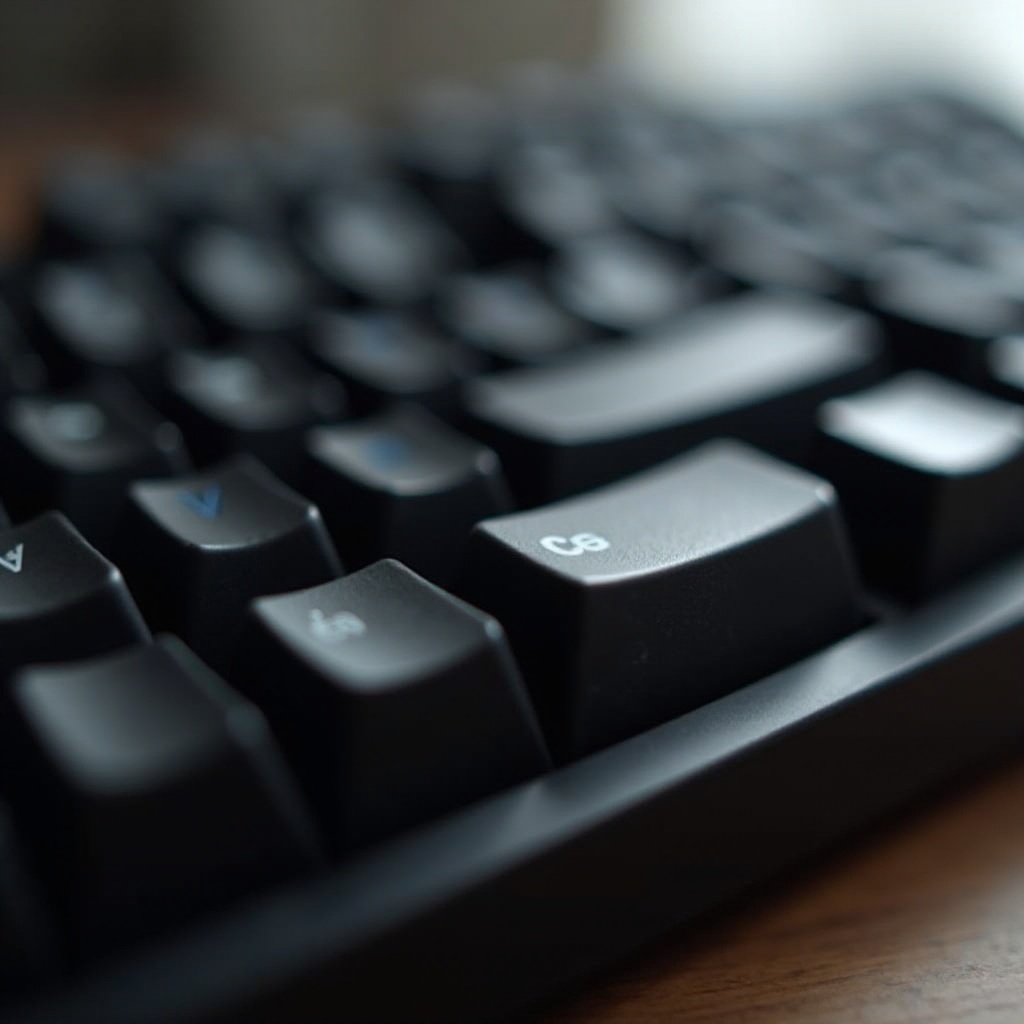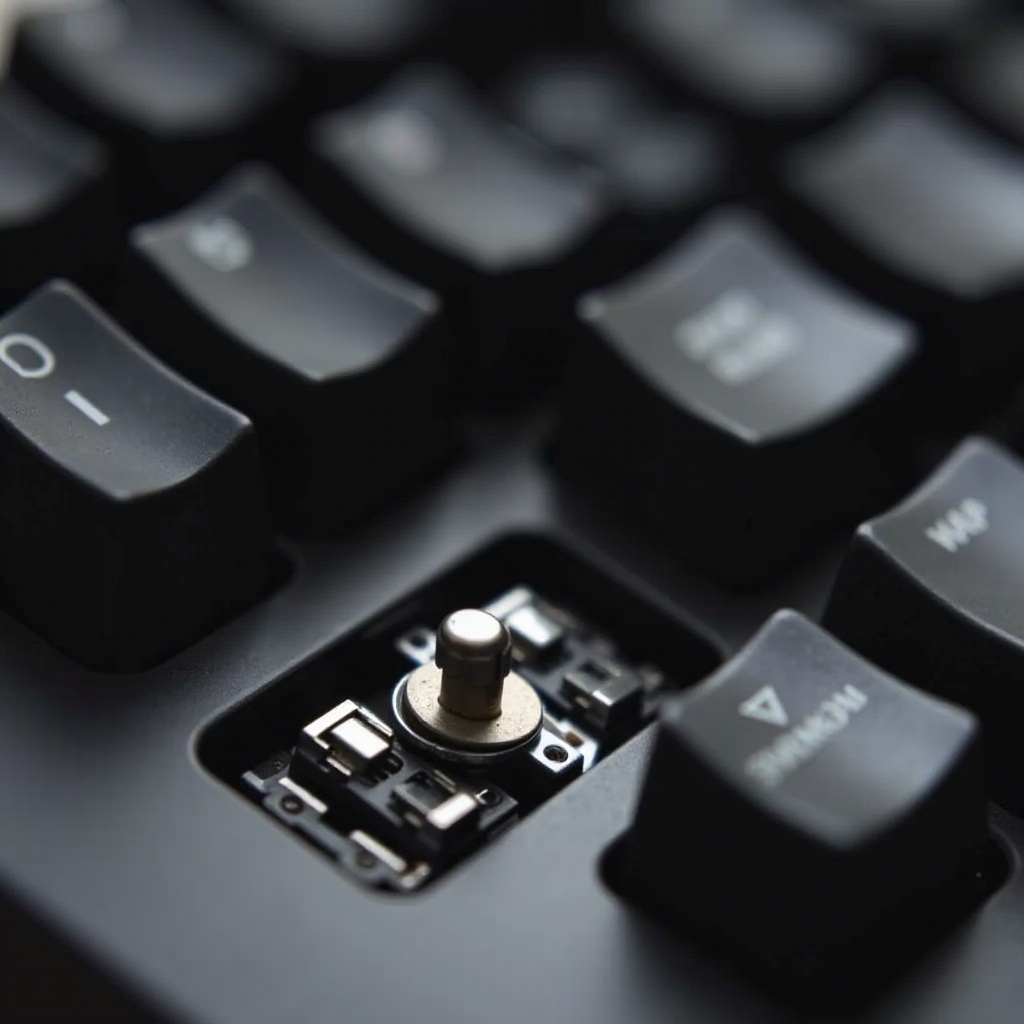Introduction
Mechanical keyboards are loved for their durability and tactile feedback, offering a top-notch typing experience. However, when a key stops working, it can disrupt your workflow and become quite frustrating. Whether the issue stems from software glitches or hardware malfunctions, knowing how to troubleshoot effectively can save you time and hassle. In this guide, you’ll find step-by-step instructions to address the issue and get back to an efficient typing experience.

Understanding Mechanical Keyboard Basics
To address a non-responsive key, understanding the basic mechanics of your keyboard is crucial. Mechanical keyboards stand out due to their individual switches located beneath each key. These switches differ in type, such as Cherry MX, Gateron, and Kailh, each offering unique tactile responses and durability. Recognizing how these elements interact is the foundation for tackling problems with non-working keys.
Before jumping into detailed troubleshooting, it’s wise to sort out any fundamental issues. A grasp of how mechanical keyboards function allows you to detect whether a problem is software-related or if it requires a closer examination of hardware components.

Initial Troubleshooting Steps
Start with basic solutions to eliminate simple issues quickly:
- Check Connections: Ensure the USB cable is securely connected to the computer. Try using different USB ports or testing the keyboard on another device.
- Inspect for Physical Damage: Look for obvious signs of damage or obstructions like spills, debris, or broken keycaps that could impair functionality.
- Restart the Computer: A system reboot can resolve temporary issues causing the keyboard to malfunction.
These preliminary steps can help identify external factors affecting performance, allowing you to focus remaining troubleshooting efforts on more complex solutions.
Software-Based Solutions
If the key remains unresponsive after initial checks, explore software-based solutions:
- Update Drivers: Outdated or corrupted drivers can lead to malfunctioning keys. Head to the manufacturer’s website for the latest driver updates, or use the device manager to update automatically.
- Check Keyboard Settings: Ensure no system settings are interfering with keyboard performance. Access your operating system’s control panel to review settings.
- Run Diagnostic Tools: Utilize built-in diagnostic tools to determine if the system is recognizing key presses. This can help distinguish between software glitches and hardware defects.
Addressing these software factors often requires less effort and can quickly restore functionality without needing to manually handle hardware.

Hardware-Based Solutions
When software attempts fall short, dive into hardware solutions:
- Thorough Cleaning: Dirt and debris accumulation under keys can hinder performance. Use compressed air for surface cleaning and consider removing keycaps for more detailed cleaning if comfortable.
- Test and Replace Switches: Use a multimeter to check the functionality and continuity of each switch. Replace faulty switches, though this may require soldering skills.
- Inspect Connections and PCB: If a section of keys is non-responsive, inspect the PCB connections for damage or disconnections that may need resoldering.
These steps ensure that the physical integrity of your keyboard is maintained and that hardware issues don’t linger.
Preventive Measures
Regular maintenance can prevent potential future issues:
- Routine Cleaning: Schedule regular cleanings to stop debris buildup from affecting performance.
- Use Protective Accessories: Keyboard covers help protect against dust and moisture, while wrist rests minimize contact, preserving cleanliness.
By incorporating these preventive measures into your routine, you extend your keyboard’s lifespan and sustain peak performance.
Conclusion
Resolving a non-working key on your mechanical keyboard usually does not require complex solutions. Through understanding your keyboard’s setup, implementing initial checks, and methodically working through both software and hardware solutions, you can effectively tackle most issues. Regular maintenance prevents recurrence, ensuring your keyboard continues to perform at its best. If persistent problems remain despite these efforts, professional repair is a worthwhile option.
Frequently Asked Questions
Why is only one key on my mechanical keyboard not working?
A single key usually indicates a switch issue or debris blocking it. Cleaning or replacing the switch often resolves the problem.
Can I replace a faulty switch by myself?
Yes, with the right tools and a soldering kit. Many online tutorials can guide you through replacing a faulty switch.
How often should I clean my mechanical keyboard?
Monthly cleaning is recommended to prevent dust and debris buildup, ensuring long-term functionality.
